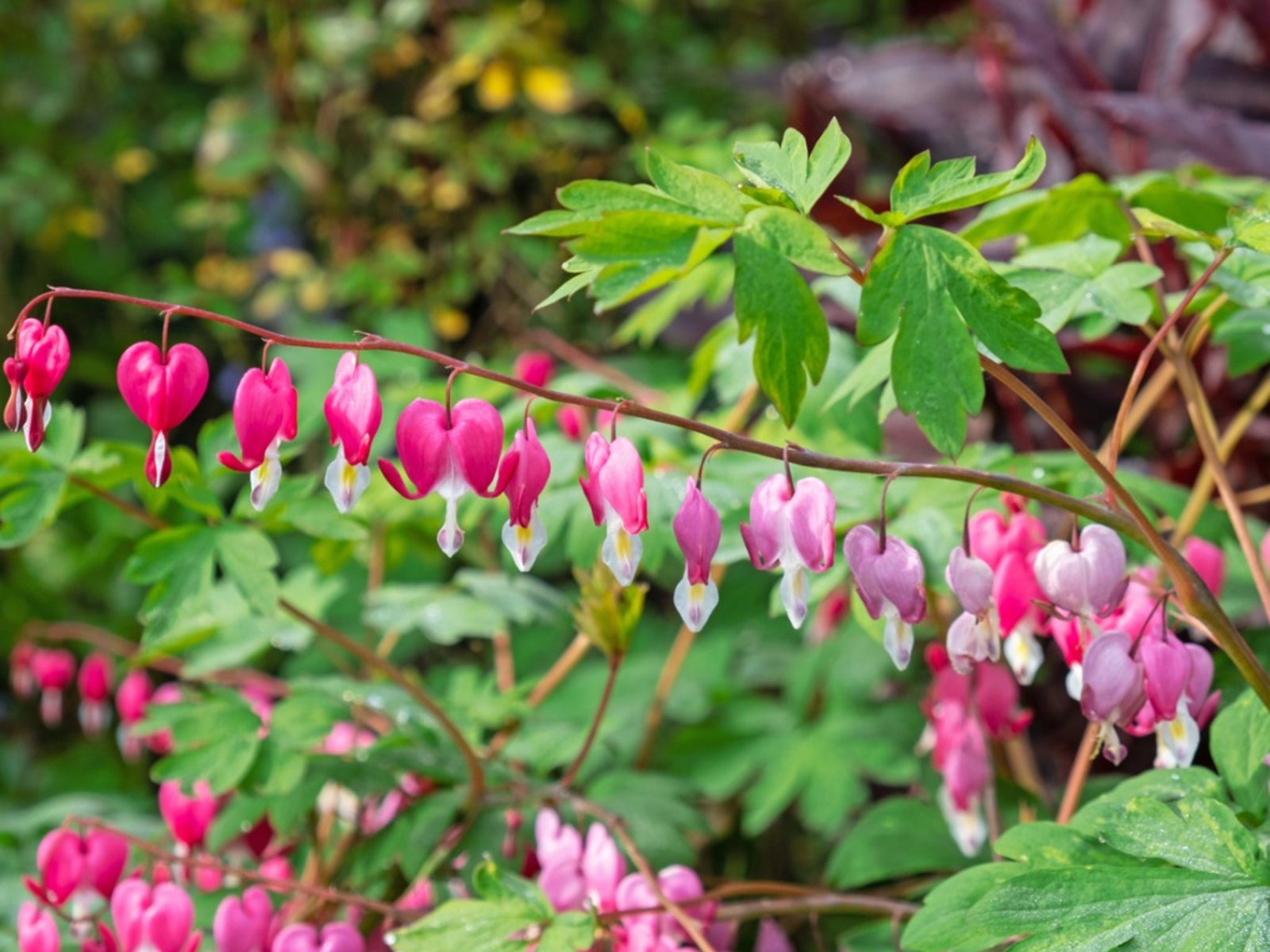Bleeding Heart Rhizome Planting – How To Grow Bleeding Heart Tubers


Bleeding heart is a favorite plant in partially shaded to shady cottage gardens throughout North America and Europe. Also known as lady-in-the-bath or lyreflower, bleeding heart is one of those beloved garden plants that gardeners can share. Like hosta or daylily, bleeding heart plants can easily be divided and transplanted throughout the garden or shared with friends. Just a small tuber of a bleeding heart can eventually become a beautiful specimen plant. If you happen to be a lucky recipient of a piece of a friend’s bleeding heart, you may question how to plant a bleeding heart rhizome. Continue reading to learn about growing bleeding hearts from tubers.
Bleeding Heart Rhizome Planting
Bleeding heart plants are usually sold as growing container perennials, bare root plants, or in packages as tubers. As growing container plants, they are already leafed out, may be flowering, and you can plant them in the garden whenever you purchase them. Bare root bleeding heart and bleeding heart tubers are the dormant roots of the plant. They both need to be planted at specific times in order to eventually leaf out and bloom. You may wonder which is better to plant, bleeding heart tubers vs. bare root bleeding heart. Both have their pros and cons. Bleeding heart bare root plants should only be planted in spring and require special planting. Bleeding heart tubers can be planted in fall or spring. In the proper site, with proper spacing, planting bleeding heart tubers is as easy as digging a hole an inch or two (2.5-5 cm.) deep, placing the tuber inside, and covering with soil. However, bleeding heart tubers generally take longer to establish and flower than bare root bleeding hearts.
How to Grow Bleeding Heart Tubers
When bleeding heart plants are divided in fall or spring, sections of their rhizomes can be used to grow new plants. Garden centers and big box stores also sell packages of bleeding heart tubers in spring and fall. Like all bleeding heart plants, these tubers will need to be planted in a partially shaded location with rich, well-draining soil. Bleeding heart plants cannot tolerate heavy clay, or other poorly draining soil, and their young tubers will quickly rot in these sites. Amend the soil with organic material if necessary. When you purchase or are given bleeding heart tubers, plant only the pieces that are fleshy; dried up brittle pieces will most likely not grow. Each piece that is planted should have one or two eyes, which will be planted facing upward. Plant tubers about 1 to 2 inches (2.5-5 cm.) deep, and about 24 to 36 inches (61-91 cm.) apart. Water the plants well after planting and be sure to mark the site so they don’t accidentally get dug up or pulled out as weeds.
Sign up for the Gardening Know How newsletter today and receive a free copy of our e-book "How to Grow Delicious Tomatoes".

Darcy is a former contributor to Gardening Know How. She is a professional landscape designer and gardening writer with experience in plant sales. An avid gardener, Darcy has a passion for sharing practical tips to help others grow.